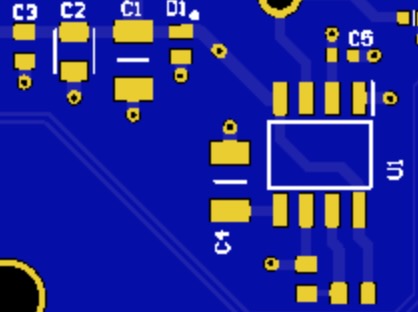Exact Measurement? For Innovation, and Progress
A coherence-based Noise Reduction System, approaches a time-independent reference, or exact standard, for the measurement of time. Download summary of scientific research here.
Increased Periodic Signal-To-Noise Ratio In Video Signals
With Coherence Technology

Areas of Application of Coherence Technology Pdf download here: https://www.upgradingtechnology.com/support-files/areasofapplication.pdf
CT has been shown to significantly increase the periodic signal-to noise ratio of video signals, reducing visual noise.
The CT processed video signal was tested at a Cox Cable Network in San Diego, California. The video signal was broadcast through a microwave modulator and demodulator, a time base corrector, and a cascade of amplifiers.
After these steps of signal transduction the periodic noise from the CT processed signal improved by nearly 15%. The readings were compared to identical non-processed video signals.
These findings indicate that CT increases signal integrity over time and distance and decreases visual noise. This improvement in visual noise is especially important in the move toward High Definition video.
In Summary: Initial reports on Coherence Technology indicate the following four important findings:
- CT changes the energy amplitudes of audio signals in the time domain.
- CT has a definite envelope dependent effect for audio signals.
- CT gives the channels of a recording higher resolution and distinction.
- CT increases the spectral density of information for the processed signal.
Applications
Applications For Increased Periodic SNR With CT
**Increasing Periodic Signal-to-Noise Ratio: Definition and Importance**
The periodic signal-to-noise ratio (SNR) in a signal, such as a video or audio signal, is a measure of the ratio between the desired information (signal) and the background noise. Increasing this ratio implies that the signal has higher clarity and less noise, making the information more distinguishable and easier to interpret or enjoy.
**Scientific and Technological Value in Video Signals and Information Technologies**
In video signals, an increased SNR, especially in periodic or repetitive aspects of the signal, means better quality visuals with less graininess or fuzziness. This is particularly significant in the digital broadcasting and streaming industry where higher video quality is continually demanded. In information technologies, higher SNR can mean more reliable data transmission and fewer errors, which is crucial in data-heavy sectors like telecommunications and internet services.
**Benefits of Increasing Periodic Signal-to-Noise Ratio**
1. **Enhanced Video Quality:** Clearer and sharper images.
2. **Reduced Data Errors:** Fewer errors in data transmission.
3. **Improved Audio Quality:** Clearer sound in communications and recordings.
4. **Increased Data Capacity:** Better compression and transmission of data.
5. **Enhanced User Experience:** Higher satisfaction from cleaner and uninterrupted viewing.
6. **Lower Bandwidth Requirement:** Efficient data transmission requiring less bandwidth.
7. **Improved Data Analysis:** More accurate signal interpretation in scientific research.
8. **Increased System Efficiency:** Less energy and computational power needed to correct errors.
9. **Extended Equipment Lifespan:** Less strain on hardware from processing noise.
10. **Better Mobile Communication:** Improved reliability and clarity in mobile networks.
11. **Enhanced Digital Broadcasts:** Higher quality broadcasting signals.
12. **Improved Satellite Communication:** Clearer signals transmitted over long distances.
13. **Enhanced Security Systems:** More reliable surveillance footage.
14. **Reduced Maintenance Costs:** Lower need for repeated data transmission.
15. **Increased Storage Efficiency:** More data stored in less space.
16. **Improved Healthcare Imaging:** Clearer medical imaging results.
17. **Enhanced Scientific Research:** More precise experimental data acquisition.
18. **Improved Financial Trading Systems:** Faster and more reliable trading signals.
19. **Enhanced Online Learning:** Clearer audio-visual content for education.
20. **Improved IoT Efficiency:** More reliable signals between connected devices.
**Industries That Benefit Most**
- **Telecommunications**
- **Broadcasting**
- **Healthcare**
- **Financial Services**
- **Online Education**
- **Consumer Electronics**
- **Automotive (especially in driver-assistance systems)**
- **Internet of Things**
- **Security and Surveillance**
- **Data Centers and Cloud Services**
**Coherence Technology (CT) and Its Impact on Video Signals**
Based on the scientific findings from the tests conducted at Cox Cable Network in San Diego, CT significantly improves the periodic SNR of video signals by managing and modulating energy amplitudes and signal envelopes effectively. This innovation not only reduces visual noise but also enhances the overall spectral density, making the video clearer over transmission distances and time. Such advancements can foster further technological and market progress, particularly in the high-definition video and streaming sectors, pushing towards higher resolutions and better viewer experiences.